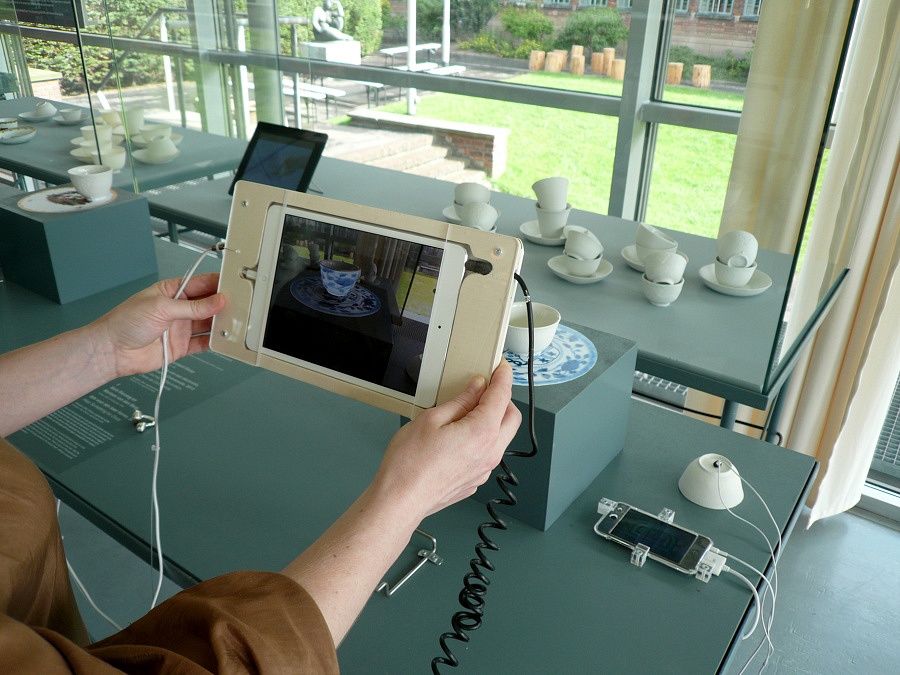Forget about a storm in a teacup, what if you could embed a whole history lesson into one beautiful 17th century teacup? All you would have to do is drink your tea, get out your smart phone, hover it over the cup and voila – you get an augmented reality history lesson.
Dutch designer Maaike Roozenburg’s Smart Replicas project will create interactive historical replicas that do exactly that. Roozenburg, who has worked on 3D printing historical objects for the past five year, kicked off phase two of the project which makes these replicas interactive.
On this project Roozenburg is collaborating with the Museum Boijmans Van Beuningen, TU Delft, creative agencies such as LikeFriends, The Atlas of Mutual Heritage and the AR (augmented reality) Lab at the Royal Academy of Art.
The idea is to make the replicas carriers of information which can be accessed by a smart phone or tablet. Roozenburg is currently working on a prototype; a replica of a 17th century teacup which is part of the collection at Boijmans. The replica will have layers of AR information embedded that explore the history of the object, its origin, use, how it was found etc. It will also talk about the other paintings and objects that are part of the same collection. Completely functional, users will actually be encouraged to drink tea in their 17th century cups as well.
“We want to expand history to an experience outside of monuments and museums. With replicas people get a real sense of how these objects were used and are then drawn into their story.”
She has been working with the Museum Boijmans and TU Delft on 3D printing replicas for the past five years. That project began when she stumbled upon 17th century remains of glass pottery excavated in Delft. “Glass is such a fragile material that it is rarely taken out of storage. And when on display, viewers can definitely not touch it. This got me wondering if there was any way to reverse engineer a historical object and specially, make it useful again,” says Roozenburg.
It wasn’t all smooth sailing though. “It took a long time to convince the museum the 3D scanning would not harm the object, but eventually they came on board as well.” At the time she was granted an Innovation Voucher from the government and approached TU Delft for the use of its CT Scanner and 3D printer.While the voucher is long gone, the collaboration with TU continued.
Last summer, a try out set-up was created at the Boijmans which went off successfully. In the long run, the plan is to make AR-enhanced Smart Replicas available at shops as well. “For now I want to focus on the prototype. I want to focus on the developing a prototype that showcases how great the replicas can be.”



Comments are closed.